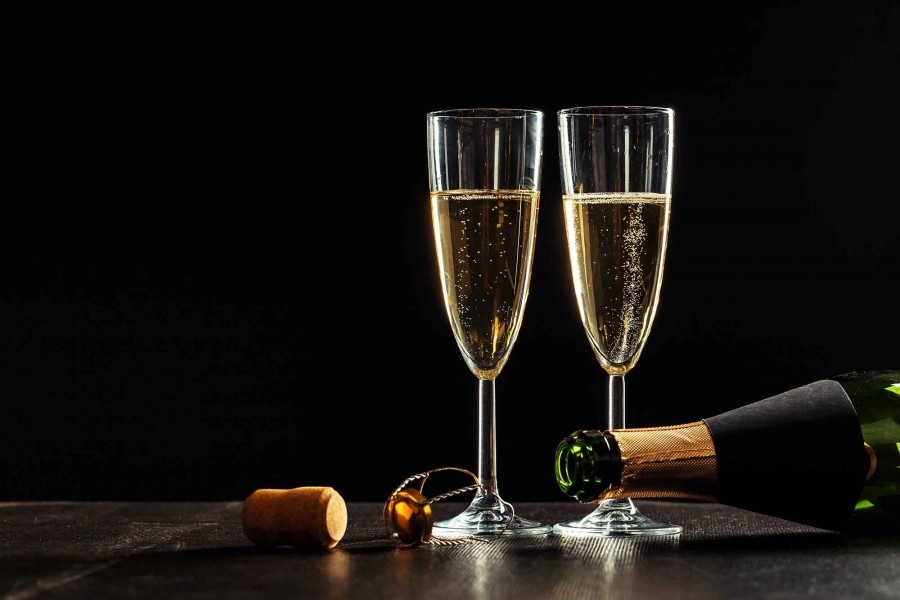 Photo: freepik.com
Photo: freepik.comWho could resist a glass of champagne or prosecco at the end of a summer day, with a light snack and a breeze on the terrace! Do you, however, know the difference between these two sparkling wines and what is the best way to consume them?
Let's start with what they have in common. Both wines are sparkling and are also permitted to make rosé sparkling wines under their respective names. Both regions have also been recognised by UNESCO as World Heritage Sites for their viticultural heritage.
So, what is the difference? The first difference is the origin: champagne comes from the Champagne region in northeastern France, while prosecco is from the Veneto region in northern Italy. Champagne can be a blend or a single varietal wine made from Chardonnay, Pinot Noir, and Pinot Meunier. Prosecco is made from the Glera grape variety.
Another significant distinction is the way in which they are produced, specifically the way the wine is made sparkling. Champagne undergoes a second fermentation in the bottle after yeast and sugar are added. It has an impact on the wine's texture and the development of other aromas. As carbonation develops under high pressure, champagne has fine, persistent bubbles. Fine champagnes often have an almond-like aroma, with subtle notes of orange peel and white cherry. The aging process of yeast particles often gives champagne an unusual aroma of cheese crust. However, in finer, aged champagnes, these aromas smell more like toast, brioche, or biscuit.
Prosecco is made by fermenting wine in a tank for the second time, also after adding sugar and yeast. It helps the wine preserve its freshness and basic aromas. Prosecco has lush aromas of fruits, such as pears and apples, and flowers. It contains lighter bubbles that don't remain long since the wine ferments in huge tanks with less pressure. Even still, the aromas are exquisite. Tropical fruits, bananas, hazelnuts, vanilla, and honeycombs are among the notes found in bottles of fine prosecco.
Both wines are perfect choices as an aperitif, and when it comes to pairing with food, it is influenced by the difference in their aromas. Champagne goes well with cold seafood appetizers, caviar, cheeses, chicken and turkey, fruit salads, and especially apricots and peaches. Prosecco goes well with prosciutto, smoked salmon, strong cheeses, sushi, and Asian food in general, as well as with appetizers with olives, mushrooms, and fruit.
What they also have in common is that they can be drunk from the same tulip champagne glasses – narrow and deep. Both wines are served cold. When opening, tilt the bottle at an angle of 45 degrees, and when pouring, tilt the glass at the same angle. That way, the bubbles won't evaporate right away.
Cheers!
By: Ana Kralj